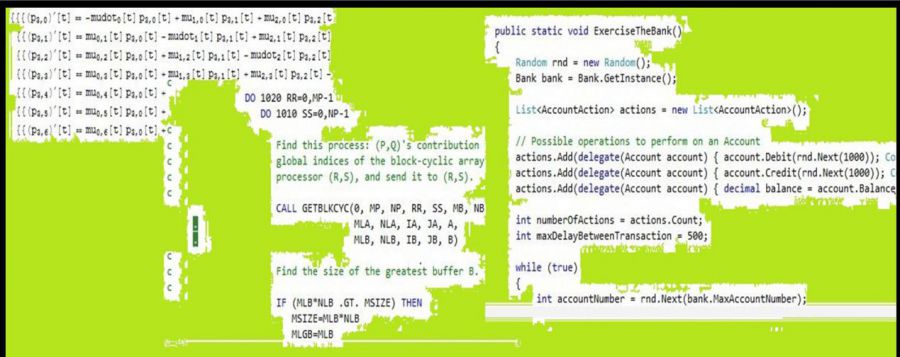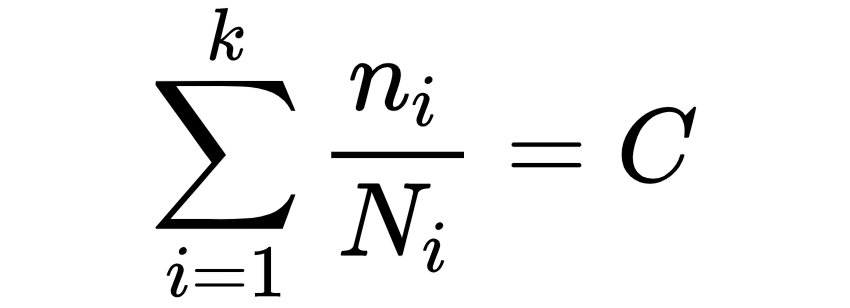Some - but not all - of the math
For even more background material, see here and here.
Contents:
- A "network of causality" is the central issue
- A simple, yet meaningful, network
- CARE processing
- Simulation based processing
- Damage law processing
- "System identification" as a multidisciplinary activity
A "network of causality" is the central issue
You - the customer - are supposed to know what causes your device to consume spare parts. The SimxonCARE offering begins with your knowledge and general understanding. Our contribution will be to make your knowledge operational.
To unreflectedly believe in the "Butterfly effect" will dilute every assumption about causality into something which cannot be made operational. You must have a notion about causality in order to apply SimxonCARE or any other tool of its kind.
That is, you have to decide upon a "network of causality". In the following, we shall illustrate this concept through an example where branching is kept at an absolute minimum. If your deliberations concerning cause and effect lead you to something more complicated than this, SimxonCARE can surely handle it. You must, however, be aware that network complexity comes at a cost.
A simple, yet meaningful, network
Imagine that you have a device which generates internal temperature differences when operating. Such a device may be prone to mechanical problems as illustrated by the model below:
Figure 1: A prototype thermomechanical problem
Here, a 2D object is fixed (and thermally insulated) at the left hand side. If the upper and lower temperatures are different, a stress concentration will develop at the word "Fillet" due to the difference in thermal expansion between the upper and the lower left hand areas.
A SimxonCARE network analysis of the above situation may look like this:
Figure 2: A SimxonCARE view (the "network of causality") of the problem in Figure 1
Here, a square box indicates "data" and an elliptic box indicates "processing". Figure 1 corresponds to the four boxes in the middle of Figure 2.
In brief, the two elliptic boxes to the right reflect the core competence of Simxon. The elliptic box to the left reflects the core competence (called CARE=Computation of Administrative Risks and Estimates) of Gmech Computing.
If your device is equipped with thermocouples which log T1 and T2 as functions of time, you may not need the CARE part to the left. We have included it to highlight SimxonCARE's unique ability to combine observed and calculated subsystem behavior.
CARE processing
The details of CARE processing as indicated on Figure 2 above is the property of Gmech Computing. Customer value arises from the fact that this kind of processing is "plug compatible" with the structural analysis based processing further downstream in Figure 2.
This means that if a customer is unable to monitor T1 and T2, monitoring instead, say, the power consumption may still lead to the desired target: To know the optimal time to replace a spare part when the load history is known for the actual device in question.
In more formal terms: The "CARE processing" referred to in Figure 2 takes as input a number of matching (Load,T1,T2)-histories in time (called "training data"). From here, a dynamic submodel is created which from each new load-versus-time-curve creates T1 and T2 curves which optimally fit the training data.
Simulation based processing
Finding a particular FEA solution to the thermomechanical problem of Figure 1 above is a trivial matter. With a minimum of assumptions you will also realize that the stress parameter which controls fatigue (typically the tangential stress component at the bottom of the fillet) depends as a function of time on T1 and T2 in a way which can be modelled with only a few parameters.
The concept above can be extended to more complex problems which will require additional parameters in order to obtain a satisfactory reduced model. For some cases, it may be relevant to complement a parameter model based on linear structural mechanics assumptions with some CARE processing or other system identification tools.
If T1 and T2 as functions of time are handed over as stochastic data from, for instance, a previous "CARE processing" step, a "Simulation based processing" step will similarly deliver stochastic stress data downstream in the network of causality.
Damage law processing
Predicting fatigue damage from an actual load history is far from trivial - both the loading and the phenomenon resulting from it will have properties which are best described as stochastic. However, historic attempts have never the less attempted to treat fatigue as a somewhat deterministic phenomenon - such approaches are definitely better than no approach at all.
Whichever approach is chosen (and there are many), its influence on SimxonCARE predictions will probably be decisive. For that reason, we expect to engage in high priority discussions with any customer on such matters. One option is to perform CARE processing on test specimen data obtained directly from the customer.
"System identification" as a multidisciplinary activity
The product name "SimxonCARE" reflects the combination of two approaches to the modeling of physical phenomena as functions of time. Conceptually, these approaches occupy distant and important corners of the entire spectrum of possibilities.
You need not dig deep to realize that "system identification" is an advanced discipline in its own right. This link points at a recommended general textbook on the topic, this link points at a very interesting cross-disciplinary competition 25 years ago, and this link points at a Czech university course syllabus. The latter features this elegant statement:
Do not estimate what you already know!
This statement is in perfect alignment with the top message of this web page: In order to spend your money wisely on system identification, you must invest in a structured, agreed-upon presentation of what your organization knows already.


